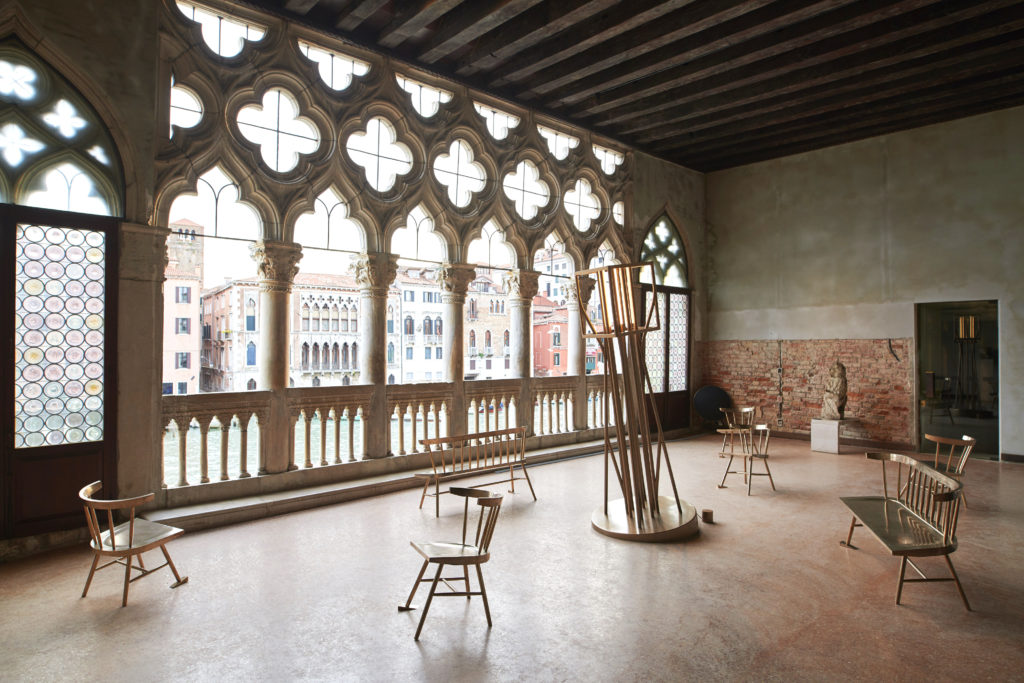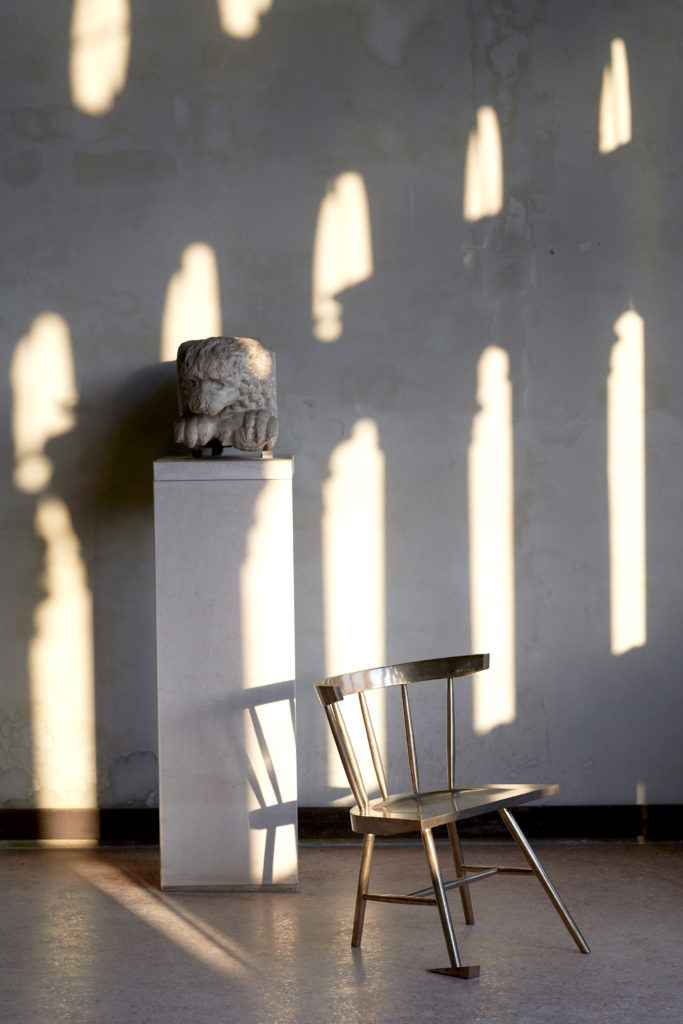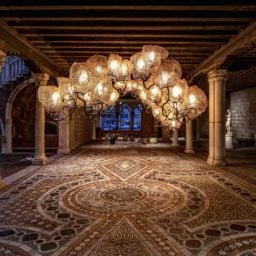“DYSFUNCTIONAL,” the group exhibition presented by international design studio Carpenters Workshop Gallery, in partnership with Lombard Odier, debuted during the Venice Biennale’s opening week at the floating city’s art-filled Ca’ d’Oro palace. With contributions by 22 leading forces in the art and design worlds, the exhibition has drawn crowds from around the globe, who have gathered to view site-specific projects that—per the show’s theme—explore the usefulness and uselessness of art and design.
For his contribution, Virgil Abloh, whose work spans several creative disciplines, from fashion and art to interior design and music, created a series of “sinking” chairs inspired by rising sea levels and the current state of Venice. His project, titled Acqua Alta, which is on view from now until November 24, is, in a certain sense, a call to arms for viewers to acknowledge the fragile state of the world in which we live, as well as a statement about how the collapsing environment might interfere with the functionality of objects we rely on in everyday life.
We spoke with Abloh about how he conceived the series, where he looked to for inspiration, and his views on the dialogue between art and design.

Abloh’s Acqua Alta series. Image courtesy Carpenters Workshop and Lombard Odier.
How did you interpret the theme of the exhibition? What, to you, is the meaning of functionality in art and design?
I think there’s a grey area that surrounds functionality because there’s a practicality to function and then there’s also an aesthetic fulfillment. So, I very much took to heart and am inspired by “DYSFUNCTIONAL,”, as you can see in the works—they aren’t balanced. We’re in Venice, a city sort of floating in water. There’s the natural occurrence of flooding, which has the city in a different typology. I liked addressing that notion head-on. In theory, the chair sort of loses its functional value when it’s not perfectly level, but in this instance it somehow can repay you more than a simple chair. It’s 2019, I think there’s a large number of regular, functioning chairs. In this context, [that’s how] these works came to be.
How are art and design different, and how are they the same?
Of course there are nuts and bolts, and lines in the sand that can make those two things distinct, but my own practice is built around blurring those lines. How can art be embedded in design? And how can art exist in a design context? That’s sort of, again, that grey area in which there’s a lot to explore and experiment with. What I’m interested in is, a chair gives you more than a [place to sit]. It seems that people only sit in a chair about 20% of its existence, but it’s 100% a visual cue and that’s what was intriguing for this sort of work.

Abloh’s Alaska Chair. Image courtesy Carpenters Workshop Gallery and Lombard Odier.
Tell me a little bit about the overarching purpose or messaging behind the chairs, which address rising sea levels.
That’s pretty much it, that they’re perceptibly sunken into the ground. Just as much as they can appear to be off-balance, I think about the remainder of water that’s pushed below the surface, too.
Why did you choose to create this work now?
A lot of my work is informed by societal contexts: the idea of climate change or global warming—or this idea of the earth being this sort of precious place. I thought that the most powerful component of art, in my premise, is how it can speak to those that aren’t in this setting, who are outside of this small community of art. What can speak to a general [audience]? I thought that this work, in this way, can give an artistic or design commentary on the fact that we are part of a larger ecosystem that includes the earth. There are things that are happening to our ecosystem at a different scale or pace than what humans can interact with. This chair sort of [acknowledges] that connection to the world around it.
What do you want people to understand or learn from it?
There’s no required reading. That’s the beauty of art. As an artist, everything I make is for the selected audience that’s into it.
Learn more about the artists and designers involved with “DYSFUNCTIONAL.”











